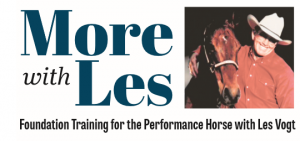 Now that we have learned how to “rate” our speed, let’s take a look at handling too much forward motion.
Now that we have learned how to “rate” our speed, let’s take a look at handling too much forward motion.
Now I’m going to tell you how to deal with a horse that’s a bit chargey. That is, he has a lot more forward motion than you enjoy, and not as much control as you would like. It’s a common problem, but you’ve got to fix it.
I’ve learned how to deal with this kind of horse by working on their neck and by reverse psychology. If he wants to go faster and push me, that is, if he wants to choose speed, I don’t like that idea much. I’m paying for the feed here, and I should get to make those choices. But what do I do? I can’t whip him; he’s too big. So I’ll make him think I agree with him and let him go, but when he wants to slow down, I’m not going to let him. And all the time I’m going to keep his shoulders up, occasionally asking him to frame up, but I’m going to keep him going right along. When he wants to slow, sentence him to three laps more. He’ll be saying, “Hey buddy, I’m getting a little tired here.” He’ll look back at you (and that alone makes it worth it) and say, “Why don’t you slow me down?” And you say, “Why? I’m starting to like this!” You want to ride him until he’s thrilled with the idea of stopping. Don’t cripple him, mind you, but make him look forward to you deciding when it’s time to quit. Then ride to the middle of the arena, let him stop, get off, unsaddle and give him his reward.
Once he’s got his air, get back on and try it again. He’ll probably challenge you again. And when he does, you want to ride like “Wilbur’s monkey,” that is, against the motion, so that your body is slowing him down. You’re pretty tired by now, but go for it again. You’ll find you won’t have to go as far this time before he starts to want to slow down.
Now if you try this program, let me start by telling you it won’t work for three days, maybe even two weeks of dedication, every day. It won’t change your horse overnight, but eventually it will do the trick. Don’t bother to do a lot of other stuff, and don’t ask him to perform anything else that’s strenuous during this period, only relaxing stuff. After three or four days he’ll start getting a little tired, but don’t quit then. Keep at it. Keep him on the program for a good two weeks or until you’ve had four days in a row that the horse didn’t try to take over when you asked him to lope off. He’ll seem like a new horse!
I’ll use a similar approach sometimes with a horse that has a little attitude and starts to toss his head and throw a tantrum when we’re working on something. I go ahead and kick him up into a run and work his mouth with my hands until he is ready to start behaving himself. You might have a little rough riding as he skips and hops around, but I’d kick him out there and make him go. If your horse is not being a gentleman, then get after him and make him really work.
Then give him a chance to be good again. This will be a rude awakening for him. It’ll be like going to the gym every day for you if he’s a real belligerent one! But you have to make it his responsibility to be good. If he is, you’ll leave him alone; if he isn’t, you’ll get after him, but don’t try to make peace and hold him together. It just won’t work in the long run.
More with Les is a regular California Horsetrader column. Les Vogt has won more than 15 World Championships, including two wins at the NRCHA Snaffle Bit Futurity. Although Les still rides and occasionally shows, his focus is giving clinics around the world and developing products for the performance horseman. To learn more about Les and to see his clinic schedule, visit the Web site: www.lesvogt.com. You can also read previous More with Les columns at: news.horsetrader.com.
Leave a Comment
All fields must be filled in to leave a message.